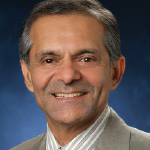The resolution supported by ACR and passed by the HOD will have the AMA prioritize improving Medicaid payment rates due to their critical impact on patient care and patient access to care. Additionally, it 1) adds to AMA policy new support for demonstration projects, carve outs and adjustments for pediatric patients and services provided to pediatric patients within the payment reform arena; 2) calls for the AMA to work with societies on payment models and to call for related payment models to be developed by the Center for Medicare & Medicaid Innovation (CMMI); 3) will have the AMA support appropriate demonstration projects, carve outs and adjustments for pediatric patients and services provided to pediatric patients within the payment reform arena; and 4) will have the AMA support and collaborate with state and national medical specialty societies and other interested parties on the development and adoption of physician-developed alternative payment models for pediatric health care that address the distinct prevention and health needs of children.
Smoothing the Path for International Physicians
As with many other specialties experiencing workforce shortages in the United States, patients with rheumatic diseases depend in part on visa-holding physicians to provide high-quality care. For the 2023 application cycle, about one third of applicants to pediatric rheumatology fellowship programs and over one half of applicants to adult rheumatology fellowship programs were graduates of non-U.S. medical schools, many of whom rely on a J-1 visa for their fellowship training years. Providing a viable path for practice in the U.S. for these highly qualified physicians will be crucial to ensuring future quality care for patients across the country.
These issues were addressed in Resolution 217, “Addressing Work Requirements for J-1 Visa Waiver Physicians,” which was introduced by the International Medical Graduates Section and strongly supported during the meeting by the ACR’s delegation. This resolution would have the AMA advocate for a revision in the J-1 waiver physician’s requirement, proposing a transition to a comprehensive 40-hour work requirement that encompasses both direct clinical responsibilities and other professional activities, acknowledging the reality of clinical practice. This resolution will move forward through referral to the AMA Board of Trustees, which will report back with recommendations at a future HOD meeting.
The ACR thanks all members who contribute to these efforts by joining or maintaining membership in the AMA. This allows the ACR to retain representation in the AMA House of Delegates and related critical policy bodies, including the AMA Relative Value Scale Update Committee (RUC) and AMA Current Procedural Terminology (CPT) policy groups. Maintain your AMA membership each year to take advantage of AMA member benefits and sustain rheumatology’s continued representation.


